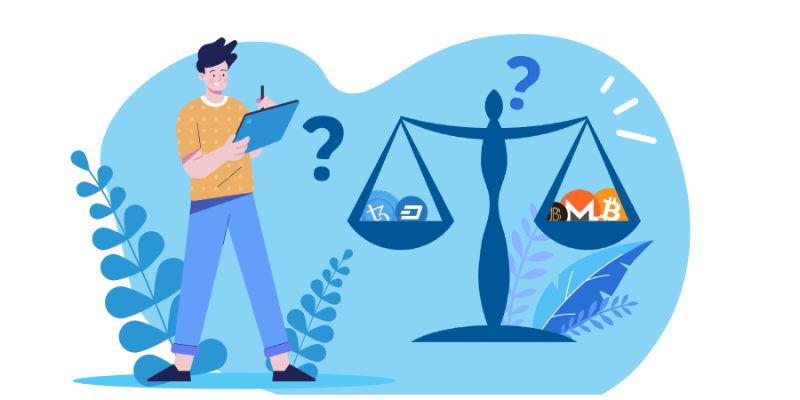Diving headfirst into the crypto pool? Hold on to your swim caps! Crypto margin trading strategies for beginners can seem like murky waters, but I’ll clear things up for you. It’s not just buying low and selling high; this game’s about smart leverage and sharper risk control. Whether you’ve got a hunch for a bull run or a gut feeling for a bear market dive, I’ll guide you through setting up your first margin account, tackle the twists and turns of market swings, and give you the lowdown on long and short plays. Ready to amplify your crypto trades without the trade-offs? Let’s dive in and power-up your beginner’s playbook!
Understanding the Basics of Crypto Margin Trading
Deciphering Leverage and How It Works in Cryptocurrency
Leverage in crypto lets you trade more than your cash on hand. It’s like a loan for trading. Using it can up your game but also your risk. So, you’ve got to be smart about it. Think of it this way: if you use leverage, you can buy more than you normally could. This could mean bigger wins but also bigger losses.
For every dollar of your money, leverage can give you more to buy with. This sounds great, right? But remember, it’s not just your money anymore. You’re using borrowed funds, and that’s a big deal. If things go south, you might lose your dough and owe some too.
Now, let’s not scare you away. Leverage can boost your gains when you bet right. For beginners, starting small is the way to go. Learn the ropes before you climb. The key here is being aware of how it all works. Get this part down, and you’re set to move on.
Setting Up Your First Margin Account
Ready to start? Setting up a margin account is your first step. This is where your borrowed cash for trading lives. Before you dive in, you’ve gotta know the rules. Every platform has an initial margin requirement. This is like an entry fee in the trading world.
You put in some of your money, and the trading platform lets you borrow more. But they’ll keep an eye on you. If your trades start to tank, you’ll hear about it. This is called a margin call, and you’ll need to fix things fast. You can add more money or close some trades.
Think of it like this: your platform is like a buddy spotting you some cash. If they see you’re about to fall, they’ll want their money back quick. They’re in it to help you but also to protect themselves.
In crypto, prices swing fast and hard. So, you need to set a stop-loss, which is like your safety net. You decide how much you’re okay with losing beforehand. This way, you won’t crash down if things turn ugly.
By now, you might think, “This sounds complex!” But hey, all great things take some learning. Margin trading can lift your wins but knowing the rules is key. Start small, learn steady, and always remember to keep that safety net ready.
Remember, you’re dealing with more than just your own cash here. So the goal is to know as much as you can, learn the tools, and trade wise. With this start, you’re on your way to rocking the world of crypto margin trading.
Managing Risks and Navigating Market Volatility
The Role of Stop-Losses in Protecting Your Investments
Imagine playing a video game where you can save your spot. If you mess up, you go back to that saved spot, not to the start. That’s like a stop-loss in trading. Set a sell price when things go bad, so you lose less money. Simple, right?
Stop-losses help you stick to a plan. If you buy a coin at $100, you might set a stop-loss at $90. If the price drops, the stop-loss sells for you. It’s auto-pilot for your trades. It’s not fun to lose, but losing less is better than losing more!
Assessing and Responding to Margin Calls
A margin call is like a video game’s “low battery” warning. It says, “Power up or game over.” It happens when your investment falls below a set level. The exchange says, “Add money or we sell your stuff.”
Be ready for margin calls. Set alerts. Check your investments often. When you get a call, act fast. Add money or consider selling some assets. Quick thinking can stop bigger losses.
When trading with leverage, you borrow money to buy more than you can afford. It can boost wins, but also losses. Imagine buying five game consoles instead of one but having to pay for all if prices drop. Ouch!
Margin trading in crypto is like a game on hard mode. The prizes can be huge, but so can losses. Smart players win by playing it safe. Use stop-losses. Watch for margin calls. Learn as you go. Start small.
Trading isn’t easy, but with the right moves, it can be rewarding. Stick with it, use these tips, and level up your trading game!
Strategies for Trading: Going Long or Short
An Introduction to Long and Short Positions in Cryptocurrency Trading
When you start margin trading in crypto, “going long” and “going short” are key moves. Going long means you buy, hoping the price will rise. Shorting means you bet on a price drop. These are basics of trading with crypto leverage.
With a long position, you’re an optimist. You see the glass as half full, the future bright for your crypto coin. Think of it like rooting for your favorite team. You’re in the stands, cheering, because you believe victory is coming.
Now, short positions are the opposite. It’s like betting against that team. You predict a stumble, a fall in price. So, you sell the coin first with plans to buy later at a lower cost. It’s like a hunch, a gut feeling that things might go south.
Remember, both strategies carry a punch. Margin trading risks for starters like you can be steep. It’s like walking on a tightrope. Balance is key.
How to Utilize Technical Analysis and Chart Patterns
Technical analysis is your secret map. It’s like treasure hunting, where chart patterns mark the spot. Get this right, and your crypto journey might just sparkle with success.
Let’s talk chart patterns. Think of them as emojis. They say a lot using just a little. Some look like lines, others like shapes. Each one tells you a story about where prices could zip or zoom next.
For example, a ‘head and shoulders’ pattern might signal a price drop. It’s like a little clue, a whisper of what’s to come. On the flip side, a ‘cup and handle’ could mean prices will soar, like a rocket to the moon.
Now, starting with crypto leverage trading, you’ll hear about candlestick charts. Each ‘candle’ shows opening and closing prices. They are snapshots, a photo album of market moods. Colors matter here. Red shouts ‘price fell’, while green sings ‘price climbed’.
But slow down, partner. This isn’t a race. Rushing can lead to spills, and spills can be costly. You must set up a margin account in crypto, meet the initial margin requirement in digital currency trading, and be ready for a margin call awareness for crypto traders. Always keep a cool head.
Using technical analysis for margin trading is like having a spyglass. It helps you peek into the future, but remember, it’s not a crystal ball. Markets can be wild beasts, and even the best maps can’t tame them.
Beginner strategies for crypto margin trading often start with a simple line. Draw it along the tops of those candlesticks, then another under the bottoms. These are your ‘support’ and ‘resistance’ levels. They’re like the floors and ceilings in your house, guiding your steps.
But, fear not! Going long vs. short in cryptocurrency with leverage doesn’t have to trip you up. Imagine you’re learning to ride a bike. Start with training wheels — small, careful trades. As you get steadier, you can slowly take off those wheels.
That’s a wrap for today’s treasure hunt, brave explorer. Keep your map close, your wits sharper, and happy trading!
Advanced Considerations in Margin Trading
Calculating Costs: Interest Rates and Swap Rates on Borrowed Funds
When you trade on margin, remember you’re using borrowed money. This means you’ll pay interest. Think of it like a loan. Each day, you’ll pay a bit more, called the swap rate. The rate varies, so check it often.
Let’s say you start with $100 and borrow $400 to buy more crypto. If the interest rate is 10% yearly, that’s about $0.11 per day just for the borrowed funds. Over time, it adds up. To keep profits up, make sure your gains are higher than this daily cost.
Understanding Liquidation Risks and How to Mitigate Them
Now, let’s talk about something scary but important: liquidation risk. This is when your account value falls so low the exchange closes your positions. You could lose everything. Why does this happen? If the market drops and your borrowed money is at risk, the exchange steps in.
How can you stop this? Set a stop-loss. A stop-loss is a sell order placed at a certain price. It limits loss if the price plummets. For example, buy a coin at $100 with a stop-loss at $90. If it dips to $90, your coin sells. You lose some but not all your money.
Apart from stop-loss, keep an eye on your margin level. It’s like a health indicator for your trade. Exchanges have rules for this level. If it goes too low, they ask for more funds, or start liquidation. Before you trade, know these levels. Stay above them to avoid trouble.
To sum up, while you chase big wins with crypto and borrowed cash, watch costs and risks. Avoid big losses with smart moves like stop-losses. Remember, in crypto margin trading, being smart keeps you in the game longer.
In our chat, we cut through the crypto margin trading jargon. We looked at how leverage boosts your buying power and walked through setting up a margin account. We then tackled the rough seas of market swings, showing how stop-losses can shield your cash and how to tackle scary margin calls.
Next, we dived into smart plays—going long when you bet prices will climb or short when you guess they’ll fall—and how charts help call the shots. Lastly, we weighed up the serious stuff: how interest on loans can eat into gains and how not to get wiped out by liquidation.
Remember, in crypto margin trading, a sharp mind trumps a lucky click. Know what you’re doing, keep risks tight, and never stop learning. Here’s to making your next trade with confidence!
Q&A :
What are some basic strategies for beginners starting with crypto margin trading?
If you’re a beginner in the world of crypto margin trading, it’s crucial to start with a solid foundation. One key strategy is to begin with low leverage to manage risk while you learn. It’s also wise to focus on a single cryptocurrency rather than diversifying too early. Setting clear entry and exit points can help manage trades effectively. Lastly, always stay informed about market conditions as they can change rapidly in the world of cryptocurrency.
How can beginners effectively manage risk in crypto margin trading?
Managing risk is paramount in margin trading, especially for beginners. One of the first steps is to use stop-loss orders to limit potential losses on each trade. Another strategy is to start with small positions and gradually increase size as you gain more experience and confidence. Additionally, keeping abreast with news and market trends is important to avoid trading on information lags. It’s also recommended to not commit more capital than you can afford to lose.
What is the importance of leverage in crypto margin trading for beginners?
Leverage is a double-edged sword in crypto margin trading; it can amplify both profits and losses. For beginners, understanding the concept of leverage is essential. Starting with low leverage is important to minimize risks. It’s the amount of money that you can borrow from a broker to make a trade, which can potentially increase your buying power in the market. Beginners should familiarize themselves with how leverage works and the responsibilities that come with borrowed capital before using higher leverage ratios.
Can beginners practice crypto margin trading strategies without real money?
Yes, most trading platforms offer what’s called a “demo account” or a “paper trading” feature, allowing beginners to practice margin trading with virtual money. This is an excellent way for novices to get a feel for the market, try out different strategies, and learn the mechanics of margin trading without any financial risk. Once comfortable, one can transition to trading with real capital.
Where can beginners find resources to learn more about crypto margin trading?
Beginners looking to educate themselves on crypto margin trading have a wealth of resources available. Online forums such as Reddit’s /r/CryptoCurrency and /r/BitcoinMarkets can be a good starting point for community insights. Educational platforms like Coursera and Udemy offer courses on cryptocurrency trading. Additionally, reading up on trading strategies in books, following industry news through sites like CoinDesk, and using social media to follow experienced traders can provide valuable learning material.



